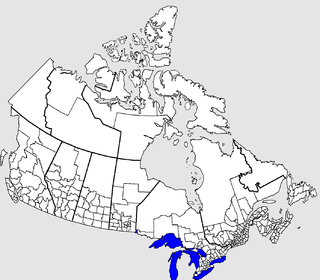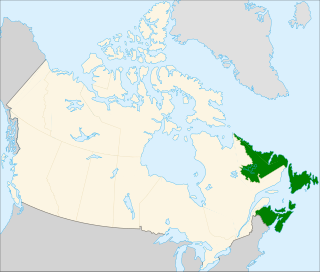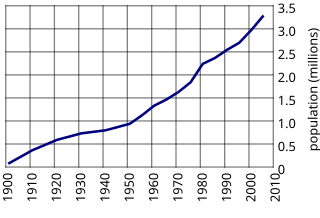A census agglomeration is a census geographic unit in Canada determined by Statistics Canada. A census agglomeration comprises one or more adjacent census subdivisions that has a core population of 10,000 or greater. It is eligible for classification as a census metropolitan area once it reaches a population of 100,000. [1]

The census geographic units of Canada are the administrative divisions defined and used by Canada's federal government statistics bureau Statistics Canada to conduct the country's five-yearly census. They exist on four levels: the top-level (first-level) divisions are Canada's provinces and territories; these are divided into second-level census divisions, which in turn are divided into third-level census subdivisions and fourth-level dissemination areas.

Canada is a country in the northern part of North America. Its ten provinces and three territories extend from the Atlantic to the Pacific and northward into the Arctic Ocean, covering 9.98 million square kilometres, making it the world's second-largest country by total area. Canada's southern border with the United States is the world's longest bi-national land border. Its capital is Ottawa, and its three largest metropolitan areas are Toronto, Montreal, and Vancouver. As a whole, Canada is sparsely populated, the majority of its land area being dominated by forest and tundra. Consequently, its population is highly urbanized, with over 80 percent of its inhabitants concentrated in large and medium-sized cities, many near the southern border. Canada's climate varies widely across its vast area, ranging from arctic weather in the north, to hot summers in the southern regions, with four distinct seasons.
Statistics Canada, formed in 1971, is the Government of Canada government agency commissioned with producing statistics to help better understand Canada, its population, resources, economy, society, and culture. Its headquarters is in Ottawa. The Minister responsible for Statistics Canada is the Minister of Innovation, Science and Economic Development, currently Navdeep Bains.
Contents
At the 2011 Census, the Province of British Columbia had 21 census agglomerations, [2] down from 22 in the 2006 Census. [3] The one deleted in 2011 was Kitimat. [4]

British Columbia is the westernmost province of Canada, located between the Pacific Ocean and the Rocky Mountains. With an estimated population of 5.016 million as of 2018, it is Canada's third-most populous province.




